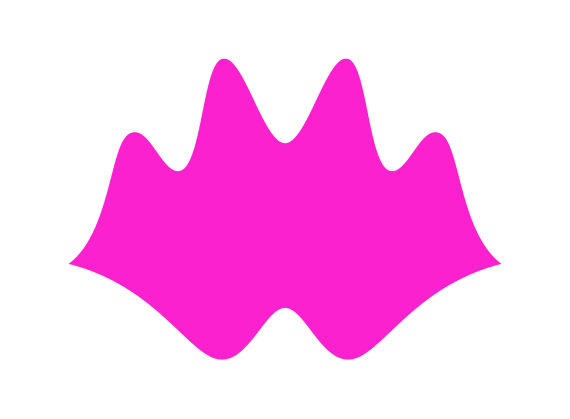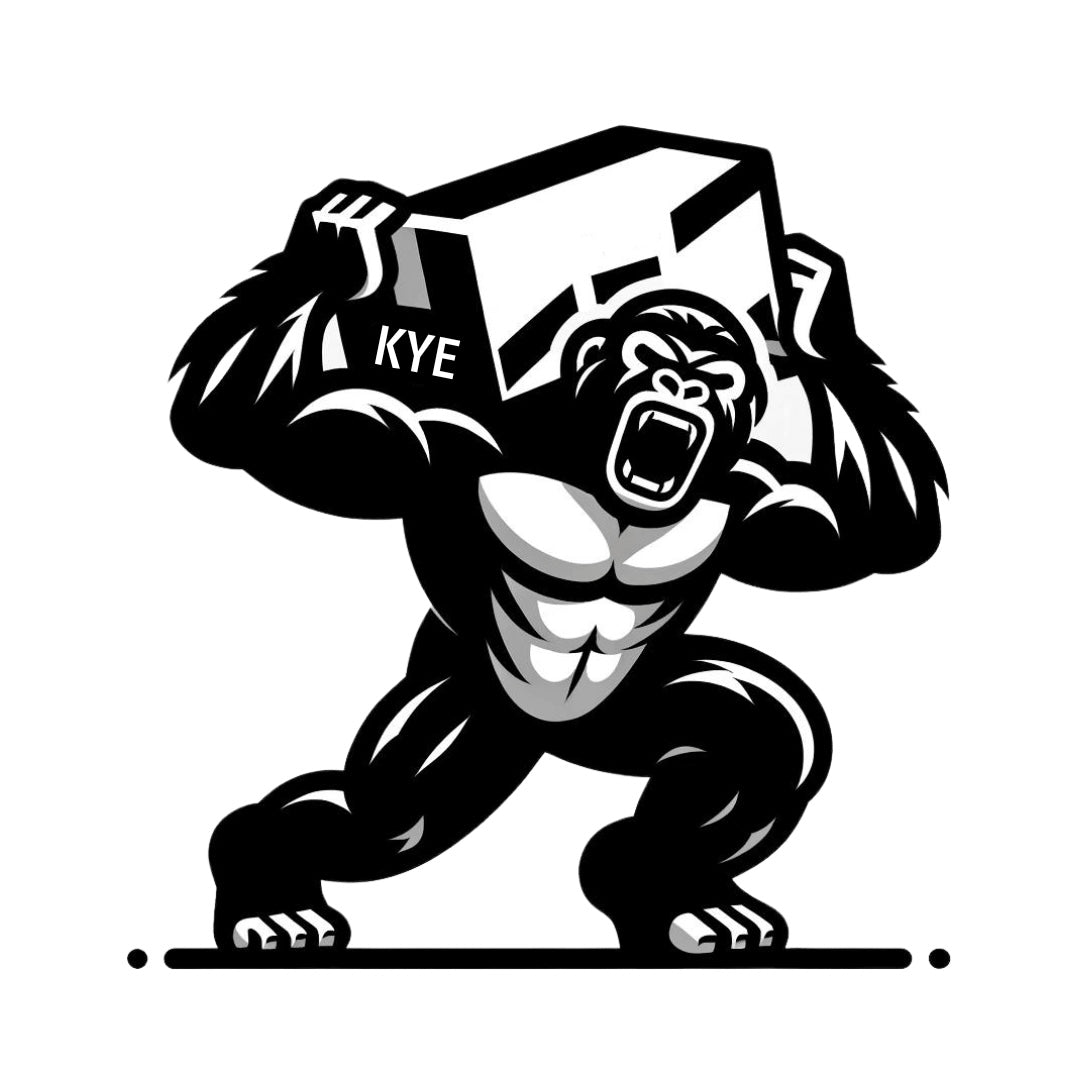The King Kong Room Treatment System
Kiss Your Ears
King Kong Room Treatment System

What you can expect to find here:
Introduction
What is the King Kong Room Treatment System?
About the King Kong Bass Trap
About the King Kong Room Treatment System
Who is it for?
Why did we design it?
How does it work?
Debunking Myths and Common Misconceptions
How low you can go with velocity (porous) absorption
What number of bass traps are required to get proper low frequency control
Why you should use the same depth absorbers for BOTH early reflections AND bass trapping functions
When to use velocity and/or pressure absorbers
The Pyramid of Room Treatment Effectivity
The acoustic requirements of a contemporary professional critical listening space
What does it include/ what is the procedure
How much does it cost?
Example Data, Case Study
Introduction
What is the King Kong Room Treatment System?
The King Kong Room Treatment System is a no-nonsense way to treat any cuboid room primarily using the King Kong Bass Trap. After copious research and implementation, we have concluded that this is THE most cost effective way to get extremely good results on any modest budget. The data should speak for itself (see below).
With our experience treating so many rooms, we compiled the results and the theory behind it to design this simplified and clear method, which we present in a Modular Sequential Placement Plan. We keep it modular so you can decide for yourself how to approach it. As this works for every standard cuboid room (and with our consultation, most other room shapes!), you can take the units with you to your next studio space, should you have to leave your current one in the future!
The theory behind the King Kong Room Treatment System is to always use the input budget to prioritize fixing the low end (thereby fixing all of the rooms’ other issues along the way). Low frequency control is a widely misunderstood and somewhat mysterious practice. We aim to clarify this for you. No more second guessing your mix decisions!

About the King Kong Bass Trap
The King Kong Premium is our flagship product and it has been designed with one goal in mind: to be the bass trap with the best value on the European market. After 4 years and 400+ studios expertly treated, we have optimised the design to achieve even better results. The standard dimensions of the King Kong Premium are 1035 mm × 660 mm x 200mm. It is the basis of our King Kong Room Treatment System. The King Kong Premium is made of a furniture grade wooden frame, filled with high density rockwool (not to be confused with glass wool, it’s evil cousin). This is wrapped in a plastic membrane to prevent particles escaping through the front textile. The unit is either wrapped in acoustic grade textile (wrapped model) or inlaid with a second interior wooden frame, which has been wrapped in the aforementioned textile, thus leaving the exterior wooden frame exposed (open frame model). The open frame model also features high quality wood stain for an extra aesthetically pleasing finish.
About the King Kong Room Treatment System
Who is it for?
The system is aimed at contemporary music producers, mixing engineers and mastering engineers, professionals and hobbyists alike. It was designed in Berlin primarily but not exclusively for electronic music producers, the ones that need serious low frequency control!
Most rooms have low frequency problems (everything below 300 Hz). When left untreated, mixes will not translate to another system/room. With the King Kong Room Treatment System, you can trust that what you are hearing is what is coming out of your speakers, so you can work securely and efficiently without constantly second guessing yourself.
You want to know that you're really getting the most out of your room and speakers. We have all the resources to ensure this is the case for you. If you are based in Berlin, you can have our technician do it for you. If you are anywhere else in Europe, we can walk you through it.
Creativity has sacred spaces. We understand this. This is why we offer a variety of aesthetic options so you can customize your own sacred space with a range of material colors and design options.
You want a room treatment system that you can take to the next studio, should you decide to move: a worthwhile investment.
We can give you results previously commercially unachievable for less than €10k for as little as €2-3k. Because of the modular nature of the system, you can begin to achieve high end results for as little as €600, or determine where your budget will take you, and never have to undo an obsolete step in the process.
If you don’t believe us or are more interested in acoustic experiments, then our approach is simply not for you.
Why did we design it?
We are all music makers. We have experienced how frustrating it can be when seeking help with studio acoustics. That was the original inspiration behind KYE.
In an industry where misinformation is disseminated liberally, we take responsibility for offering useful, sound (pun intended) and pragmatic acoustics advice. We don’t need to profit on every turn and we are not interested in adhering to the current market norms.
To change the system, you have to become part of it. We are striving to change the system by infiltrating it with honesty and pragmatism.
More often than not, music makers do not make a large income from their craft. They are generally undervalued in modern society. We aim to empower our people, not take advantage of them! Opposing those that attempt to by offering an alternative is what drives us to do what we do.
Beyond this, we are dedicated to acoustics education. In a climate where Youtube channels offer various theories and misguided studio acoustics advice at every opportunity, we feel there is no logical alternative for us other than to blow this apart like a battleship full of egg cartons and foam absorbers.
In essence, the system has been designed to create critical listening rooms - production studios, control rooms, mixing and mastering suites - for a fraction of the previous cost of such high quality audio workspaces.

How does it work?
The King Kong Bass Trap System has been designed to give you the maximum bang for your buck in any normal cuboid room until the input budget gets high.
This works by using a fortunate series of “sweet spots,” that synergistically diminish the room’s resonances to create a clear and detailed low end, as well as tackle almost every other acoustic problem the room faces along the way. We aim to give away some of those closely guarded secrets of acousticians’ leverage.
The first controversial secret: for most normal shaped rooms (think a rectangle apartment bedroom, for example) the set-up rules are the same for the first 80% of the work. The last 20% is the extremely expensive part and in most cases unnecessary. Most acousticians will not tell you this. In fact, some practitioners do not even properly understand the extent to which one can control the sub bass with a system like this.
Details of the theory behind the system are noted below.
Debunking Myths and Common Misconceptions
How low you can go with velocity (porous) absorption:
These velocity absorbers have been engineered to the point of maximum achievable effectivity, meaning they are designed to be the most effective a velocity trap can be. (They attenuate 40 Hz at 0.6 sabins, 70 Hz at 0,8 sabins and 100 Hz at 0,86 when placed correctly).
What number of bass traps are required to get proper low frequency control:
Consider the following waterfall graph:

It shows a BEFORE and an AFTER measurement of a studio in Berlin from 40 Hz to 500 Hz. Vertically, we see amplitude, horizontally, we see frequency, and coming towards us is the dimension of time. From the measurement above to the measurement below, we can see that the “ringing” (a.k.a. resonances) in the sub-bass has diminished drastically! Furthermore, the frequency response in Sound Pressure Level (on the horizon) has levelled (a.k.a. “flattened”) considerably. This was not achieved with just two bass traps. There are 24 of our 2018 model of King Kong Premium in the 20m² room! Since 2018, we have dramatically improved the effectiveness of all our products, including the King Kong Premium.
Even with the knowledge that low frequency energy requires enough mass, depth and surface area to control, it is still MUCH more efficient to choose velocity absorption over pressure absorption. If you tried to do this with membrane traps you would need a whole lot of them!

The King Kong Premium has been greatly optimised and now has an absorption coefficient of 0,6 at 40 Hz when placed diagonally over corners (depicted above in red). That is an extremely efficient and low reaching absorber! With enough of these units, those tricky sub-bass resonances will no longer ruin your mixes! It also has a coefficient of 0,8 at 110 Hz when placed directly on the walls (pictured in orange). Again, extremely efficient. Here you can really see the difference that the corner placement makes.
Why you should use the same depth absorbers for BOTH early reflections AND bass trapping functions:
Placing thick velocity absorbers 45 degrees over corners is the best way to maximize the use of their depth and density. This allows them to absorb the lowest frequencies relevant to their design via the ¼ wavelength rule. It also allows them to take up minimum space in the room.
Placing the absorbers over the early reflection points on the wall (ideally with some air gap) is how we create the stereo image, reduce the reverb time and create a more balanced SPL reading by removing comb filtering, etc.
In order to achieve a more even reverb time, you should use the same traps for both functions (“bass trapping” diagonally over corners and “early reflections” covering certain wall areas).
If you use thinner absorbers for the high frequencies and thicker absorbers for the lows, then you will end up with the following situation: ALL absorbers absorb the mids and highs and only the optimized density deeper absorbers can control the low frequency energy, leaving it resonant in the room alongside highly absorbed highs.
This means there will be a very uneven reverb time (an acoustic problem many create for themselves.) A room like this would be very difficult to work in efficiently and the mix would definitely not translate well. To upgrade the low frequency control, the thinner absorbers (10 cm or so) would become obsolete, so by using the King Kongs for each function, we also avoid repeating any steps in the process.
We strongly advise against using thinner velocity (broadband) absorbers for high quality critical listening rooms. These can be engineered to be extremely effective down to around the fundamental frequencies of human voice (a 0,6 coefficient at 200 Hz is achievable with a well designed 10 cm absorber flat against a wall). However, as mentioned, this does lead to uneven reverb times - especially since the music nowadays contains much lower frequencies than when a lot of the current “standard” room treatment approaches were developed. Even chart releases can have strong 40 Hz representation these days. That said, when the budget is very low, we would incorporate (usually pre-existing) thinner absorbers into your room setup.
Why you should use ONLY velocity absorbers until you have exhausted their use and still experience problems:
Many think that for low frequencies you should just use pressure absorbers (membrane traps, diaphragmatic traps, etc.). This is simply an inefficient approach and will waste a lot of your budget on something that only does one specific task. The pressure trap would target a specific frequency while leaving the rest mostly untouched. This is a somewhat problematic approach when dealing with any standard room that will have many sub resonance issues to solve, unless it is used as a final stage. You would need just as many traps and since pressure absorbers are much more expensive (unless, of course, you choose a Kiss Your Ears model), it really is the last resort. You should use pressure traps when you have covered ALL of your reflection points and room corners in a correctly designed velocity absorber. Granted, the King Kong Bass Trap’s effectiveness drops off at 40 Hz.
You can think of pressure traps like sniper rifles, which are used at the end of the room treatment process for any finicky remaining problems. Velocity absorbers are more like shotguns eliminating many issues at once, providing an exponentially better “bang for your buck.”
The Pyramid of Room Treatment Effectivity:

The structure of the room itself is the most influential factor to the overall sound. This is the thing you can do the least about, unless you have the privilege of designing the construction as the architect in chief (you can arrange that with us as we specialise also in Architectural Acoustics aka. Acoustic Building and have a large team of fully trained studio builders - otherwise you guessed it! We can also help you by proxy to do it all DIY).
The listening position and speaker placement is the next most important thing. This is usually the first thing you can control and it creates the realistic starting point for our hierarchy. Luckily, this is easier to achieve than it may seem and we have an acoustician on hand who can do this for you or guide you through it.
Next is broadband (velocity) absorption. The good news is, in most cases it is as simple as designing the most efficient velocity bass trap that can be achieved (we have already done that for you) and applying it in all of the mentioned areas. This will, in any case, be the most efficient way to use a budget of up to €3.000 eur (versus the €10,000 one would spend with a more conservative acoustics company). Beyond this, a consultation with our acoustician is advised. We offer this consultation as part of any service and always aim to give free advice regarding room acoustics.
The acoustic requirements of a contemporary professional critical listening space
Expertly designed Broadband Absorbers such as the King Kong Premium absorb across the entire audible spectrum so they can take care of low, mid and high frequencies. in a wide array of issues and scenarios. Most typical room problems can be solved this way!
For example, to obtain a high-end professional mixing environment from your room, you would need:
*A detailed stereo image
*Modal resonances fixed (detailed, defined low end)
*An even frequency response
*An even reverb time across the frequency spectrum
*Defined dynamics and transients
*Flutter echo diminished
ALL of this can be achieved with the King Kong Room Treatment System.
The “80-20 rule” is widely considered one of the most helpful concepts for life and time management. Also known as the Pareto Principle, this rule suggests that 20% of your activities will account for 80% of your results. In room acoustics, well-designed broadband absorption is exactly this!
Treating so many rooms in Berlin and online by proxy, we would always ask the client’s budget as a first point of call so we could identify how many King Kong Bass Traps they can afford, and try to maximise this as it will ALWAYS lead to optimal results. Where velocity bass trapping is concerned, it really is the more the merrier.
For most, that is way more than they initially expected and we all go home happier.
However, you may have a 30 Hz modal resonance in your room and a subwoofer that activates it. In this case, the next step would be tuned absorption. The aforementioned pressure traps, a.k.a membrane and diaphragmatic absorbers, etc. are the weapon of choice here.
When all of this is done you may want to add diffusion. This is the last step in the pyramid as it is the least effective process and relatively bad ‘bang for your buck’ by design. Most diffusers are only effective in high frequencies and anything below high mids requires large designs that are expensive to commission. Furthermore, they must be placed 2-3 times the lowest diffuse wavelength away from the speakers and listening position, furthering their impracticability in small rooms.
However, they do look quite beautiful! We are currently in the process of developing our own range of affordable and effective diffusers (as the two do not normally go hand in hand), to be released in late 2022.
A final optional piece of the puzzle: speaker EQ software.
Sonarworks in particular is a very contemporary software package that works beautifully as this piece of the puzzle. We don’t endorse it, but we don’t disregard it. It is almost a matter of taste. Sonarworks does not compensate the dimension of TIME - therefore resonances must be solved first- but it is recommended as a final step after the bass traps handle the room’s resonances. Without adding the bass traps first, you may end up in a messy and confusing situation!
You can avoid the targeted upsell from acousticians who often prey on a client’s lack of understanding for how much they need to do to their room.
From doing 400+ room treatment plans, we realised that the bulk of it was ALWAYS the same sequence of approach in a cuboid room. We realised the real innovation could be achieved by bypassing the extortionate markups that acousticians put on their services and offering you that knowledge free of charge with every purchase. That is not to say you are alone with the PDFs, no, no. We have an acoustician on hand that will answer your queries and guide you through any issues free of charge. In Berlin, we also can organise full installation taken care of by a trusted affiliated company at a competitive price point.

What does it include/What is the procedure?
Depending on your location (and budget), the approach can be slightly different.
In Berlin, we can organise for you several services. We can even offer you the accompanying resources free of charge to complete the work yourself. We can also ship your units to you wherever you are in Europe and guide you through the installation process by proxy, and we provide installation guidelines free of charge with every order.
How much does it cost?
Please contact us for details.
Example data
Facing the facts; the KKRTS has been developed by extensive research that we’ve performed through the measurement, treatment and design of acoustic solutions for over 200 rooms. All A/B Testing has been executed under controlled conditions*. The results are even astonishing for us!

Waterfall Full Scale:
Before Treatment
After Treatment

Comment: Aside from a very deep mode at 30 Hz, almost every other resonance’s decay has been shaved by up to 1.5 seconds! Corresponding peaks have been attenuated by almost -10dBSPL!
Waterfall Bass Detail:
Before Treatment
After Treatment
Comment: We’ve managed to slice down ringing resonances and smoothen the low end to critical listening room standards at under 400 ms of decay through the time alignment and drastic flattening of the level and frequency response.
Reverberation Times (RT60):
Before Treatment
After Treatment
Comment: the peak RT60 level within the 100 Hz octave band has been reduced by a whopping 1.71 seconds. Furthermore, the effect of distributing even broadband velocity absorption is strikingly apparent when we observe how radically reverberation times have become more linear in each octave band across the frequency spectrum.
Measurement specifications/ procedure:

Further data examples and full room treatment reports from our extensive database are always available on request.
Feel free to contact us at info@kissyourears.com anytime.








